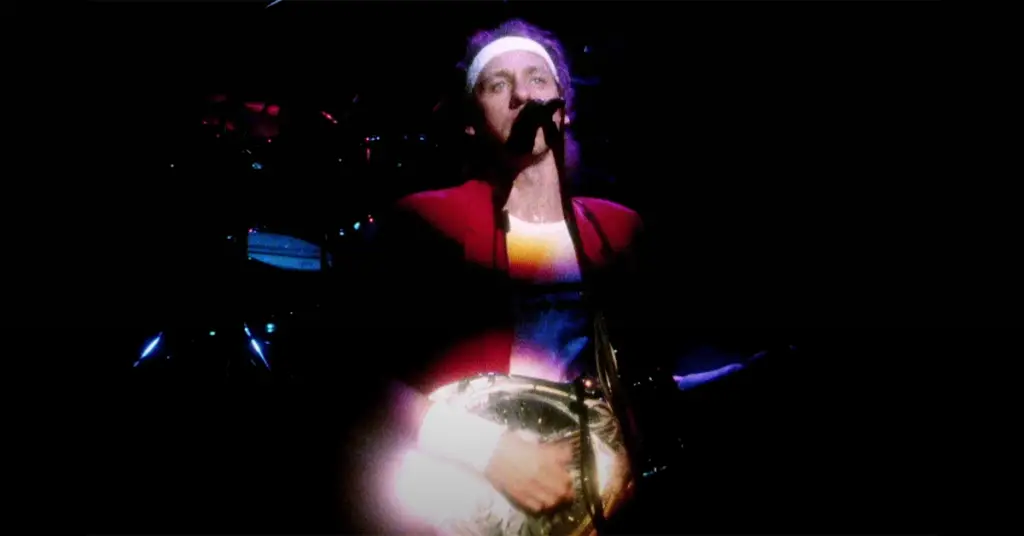Dire Straits – “Romeo and Juliet”: A Modern Love Story Bathed in Melancholy
Released in 1980 on the band’s third album, Making Movies, “Romeo and Juliet” stands as one of Dire Straits’ most poignant and poetic songs. Written by frontman Mark Knopfler, the track isn’t a retelling of Shakespeare’s tale, but a modern reinterpretation — a reflection on a love that once felt epic but ultimately fell apart.
Blending romantic imagery with street-level realism, “Romeo and Juliet” is not just a love song — it’s a post-love song, filled with heartbreak, longing, and the bitter clarity that often follows romance gone wrong.
The Sound: Intimate, Wistful, and Acoustic-Led
The track opens with the unmistakable sound of a National Style-O steel guitar, played with a resonator to create a shimmering, chiming tone that feels both nostalgic and intimate. This guitar riff sets the mood: vulnerable and wistful, like the last echo of a conversation that once meant everything.
The arrangement slowly builds, adding:
- John Illsley’s subtle basslines
- Pick Withers’ restrained drumming
- And Knopfler’s vocal delivery, which leans more into narration than performance — understated, almost conversational.
There’s no overproduction here. Just space, tone, and emotional honesty — a hallmark of Dire Straits’ approach to storytelling through music.
The Lyrics: A Love That Didn’t Live Up to the Script
“A love struck Romeo sings the streets a serenade / Laying everybody low with a love song that he made…”
Right from the start, Knopfler draws a vivid contrast between Romeo the romantic and the harsh world that surrounds him. He’s not on a balcony in Verona — he’s in the streets, playing guitar under dim lights, hoping she hears him.
“You promised me everything, you promised me thick and thin, yeah / Now you just say, ‘Oh Romeo, yeah, you know I used to have a scene with him.’”
These lines hit like a punch. The Juliet in this version has moved on — perhaps for reasons of fame, practicality, or simply life’s drift. Romeo hasn’t. He’s left replaying the past, still believing in the dream they once shared.
Knopfler’s writing here is cinematic yet deeply personal, filled with heartbreak, irony, and a quiet kind of grace. It’s about the difference between the storybook version of love and the real thing.
Context: Love, Loss, and Real Life Inspiration
Though Knopfler has never confirmed it explicitly, it’s widely believed that “Romeo and Juliet” was inspired by his breakup with Holly Vincent, lead singer of the band Holly and the Italians. She reportedly left him at the height of Dire Straits’ early fame, and the rawness in the lyrics seems to reflect the kind of personal grief only an artist can fully turn into melody.
Rather than rage or bitterness, though, the song is filled with yearning and reflection — Romeo may be hurt, but he’s still hoping she remembers what they had.
Legacy and Influence
Though not a massive radio hit in the U.S., “Romeo and Juliet” became one of Dire Straits’ most beloved songs, particularly in the UK, where it reached:
- #8 on the UK Singles Chart
- And later became a concert favorite and a recurring feature in live acoustic sets
Over the years, it has been covered by numerous artists including The Killers, Indigo Girls, Matt Nathanson, and Josh Groban — a testament to the song’s universal themes and emotional resonance.
Its influence continues to shape how songwriters use literary allusion and personal narrative to create deeply relatable stories.
Final Thoughts
“Romeo and Juliet” is a masterpiece of emotional understatement. It takes a centuries-old tale of doomed love and transplants it into the back alleys and apartment balconies of modern heartbreak. It reminds us that even when the world moves on, the echoes of love — real, raw, and unfiltered — stay with us.
It’s not about tragedy for tragedy’s sake.
It’s about memory.
About what we thought love was.
And what it became when the curtain fell.



Facebook Comments